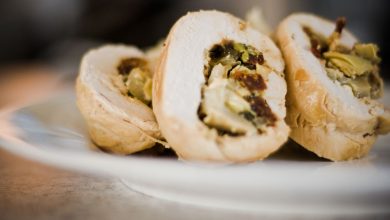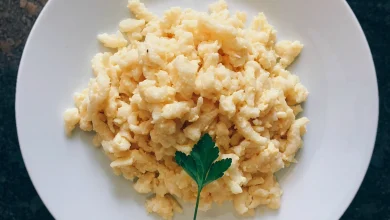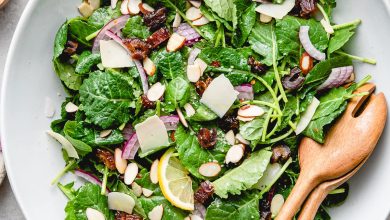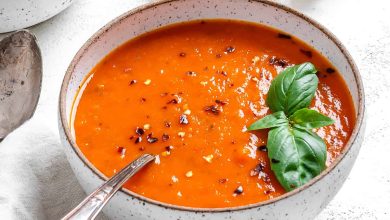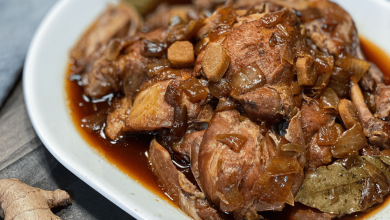Apricot Jelly
🍑 Apricot Jelly: A Sweet Delight 🍑
Apricot jelly is a delicious fruit spread made from ripe apricots. It’s a sweet and tangy treat that’s perfect for spreading on toast, using as a filling for pastries, or even as a glaze for meats. Here’s a detailed response to your questions, complete with emojis! 😊
📜 History:
Apricot jelly, like many fruit preserves, has a long history that dates back to ancient times. Apricots themselves are believed to have originated in China over 4,000 years ago. As apricots spread to other parts of the world, so did the practice of making apricot jelly. It became a popular way to preserve the fruit’s flavor and enjoy it year-round. In medieval Europe, it was considered a delicacy and served in royal courts.
🧪 Components:
- Ripe Apricots: The primary ingredient, preferably fresh and ripe.
- Sugar: Used to sweeten the jelly and act as a preservative.
- Pectin: A natural gelling agent found in fruits. It helps the jelly set.
- Lemon Juice: Adds a hint of tartness and helps with the gelling process.
- Water: To create a cooking medium and aid in the jelly’s consistency.
👩🍳 Preparation Steps:
Making apricot jelly can be a delightful culinary adventure! Here are the steps:
-
Prepare the Apricots: Wash, pit, and chop the ripe apricots. You’ll need about 4 cups of chopped apricots for a standard recipe.
-
Combine Ingredients: In a large pot, combine the chopped apricots, sugar, lemon juice, and water. Use about 4 cups of sugar for every 4 cups of chopped apricots. The lemon juice adds a nice tartness and helps the jelly set.
-
Cooking: Bring the mixture to a boil over medium-high heat, stirring constantly until the sugar dissolves.
-
Simmer: Reduce the heat to low and let the mixture simmer for about 15-20 minutes, or until the apricots are soft and the mixture thickens.
-
Test for Set: To check if the jelly has reached the desired consistency, place a small amount on a chilled plate. If it wrinkles when you push it with your finger, it’s ready. If not, continue simmering and test again in a few minutes.
-
Skim Foam: Remove any foam that forms on the surface of the jelly during cooking.
-
Ladle into Jars: While the jelly is still hot, carefully ladle it into sterilized canning jars, leaving about 1/4 inch of headspace.
-
Seal and Process: Seal the jars with sterilized lids and process them in a boiling water bath for about 10-15 minutes to ensure they are sealed properly.
-
Cool and Store: Allow the jars to cool to room temperature, and then store them in a cool, dark place. Properly sealed jars can last for up to a year.
⏳ Time Needed:
The time required to prepare apricot jelly can vary, but a typical batch takes around 1 to 1.5 hours, including preparation, cooking, and processing. The actual time may depend on factors like the ripeness of the apricots and your cooking equipment.
Enjoy your homemade apricot jelly! 🍑🍯 It’s a sweet and flavorful treat that can brighten up your breakfasts and snacks.
Certainly, here are the nutrition facts and some health information for homemade apricot jelly:
Nutrition Facts (Per 1 tablespoon serving):
- Calories: 45
- Total Fat: 0g
- Sodium: 0mg
- Total Carbohydrates: 12g
- Sugars: 11g
- Protein: 0g
Health Information:
-
Vitamins and Minerals: Apricot jelly contains vitamins like vitamin A and vitamin C. Vitamin A is essential for good vision and skin health, while vitamin C is an antioxidant that supports the immune system.
-
Fiber: While apricot jelly does not provide significant fiber content compared to fresh apricots, it still contains some dietary fiber. Fiber can aid in digestive health and help regulate blood sugar levels.
-
Sugar Content: Apricot jelly is relatively high in sugar, with each tablespoon containing about 11 grams of sugar. It’s important to consume sugary spreads like apricot jelly in moderation, especially if you’re watching your sugar intake.
-
Natural Fruit: Homemade apricot jelly is made from fresh apricots, providing the natural goodness of fruit. Apricots are a good source of antioxidants, including beta-carotene, which may have various health benefits.
-
No Preservatives: When making homemade apricot jelly, you have control over the ingredients, so you can avoid artificial preservatives and additives often found in store-bought jams and jellies.
-
Portion Control: Due to its sweetness, it’s a good idea to use apricot jelly in moderation. A little goes a long way in adding flavor to your dishes.
Remember that the nutritional content can vary based on the specific recipe you follow, including the amount of sugar used. It’s always a good practice to check the nutrition label if you’re using store-bought apricot jelly, as commercial brands may have different ingredients and nutritional profiles.

